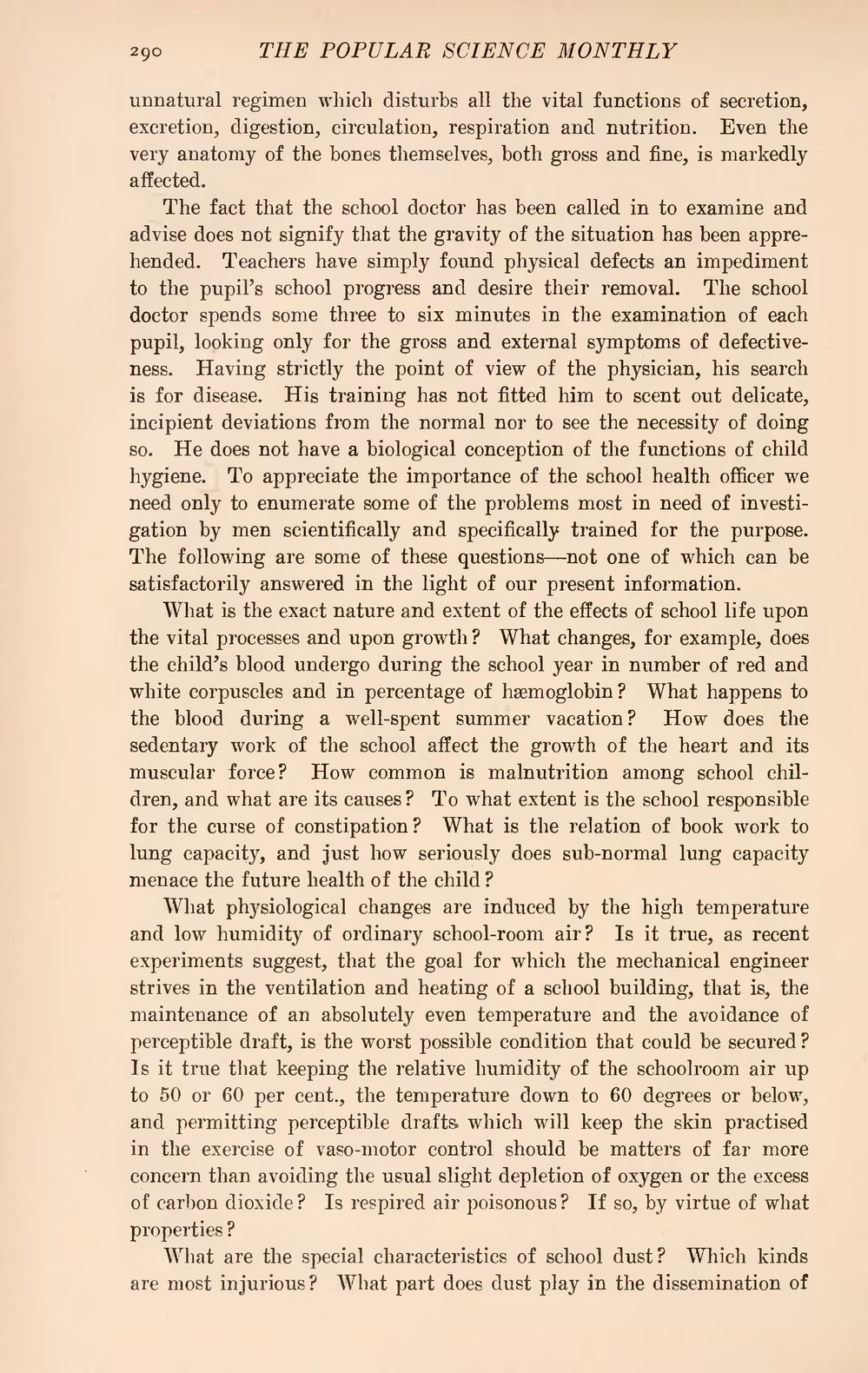unnatural regimen which disturbs all the vital functions of secretion, excretion, digestion, circulation, respiration and nutrition. Even the very anatomy of the bones themselves, both gross and fine, is markedly affected.
The fact that the school doctor has been called in to examine and advise does not signify that the gravity of the situation has been apprehended. Teachers have simply found physical defects an impediment to the pupil's school progress and desire their removal. The school doctor spends some three to six minutes in the examination of each pupil, looking only for the gross and external symptoms of defectiveness. Having strictly the point of view of the physician, his search is for disease. His training has not fitted him to scent out delicate, incipient deviations from the normal nor to see the necessity of doing so. He does not have a biological conception of the functions of child hygiene. To appreciate the importance of the school health officer we need only to enumerate some of the problems most in need of investigation by men scientifically and specifically trained for the purpose. The following are some of these questions—not one of which can be satisfactorily answered in the light of our present information.
What is the exact nature and extent of the effects of school life upon the vital processes and upon growth? What changes, for example, does the child's blood undergo during the school year in number of red and white corpuscles and in percentage of hæmoglobin? What happens to the blood during a well-spent summer vacation? How does the sedentary work of the school affect the growth of the heart and its muscular force? How common is malnutrition among school children, and what are its causes? To what extent is the school responsible for the curse of constipation? What is the relation of book work to lung capacity, and just how seriously does sub-normal lung capacity menace the future health of the child?
What physiological changes are induced by the high temperature and low humidity of ordinary school-room air? Is it true, as recent experiments suggest, that the goal for which the mechanical engineer strives in the ventilation and heating of a school building, that is, the maintenance of an absolutely even temperature and the avoidance of perceptible draft, is the worst possible condition that could be secured? Is it true that keeping the relative humidity of the schoolroom air up to 50 or 60 per cent., the temperature down to 60 degrees or below, and permitting perceptible drafts which will keep the skin practised in the exercise of vaso-motor control should be matters of far more concern than avoiding the usual slight depletion of oxygen or the excess of carbon dioxide? Is respired air poisonous? If so, by virtue of what properties?
What are the special characteristics of school dust? Which kinds are most injurious? What part does dust play in the dissemination of
